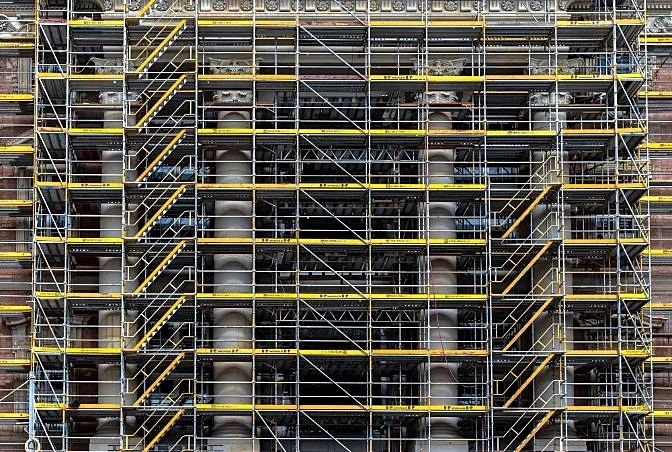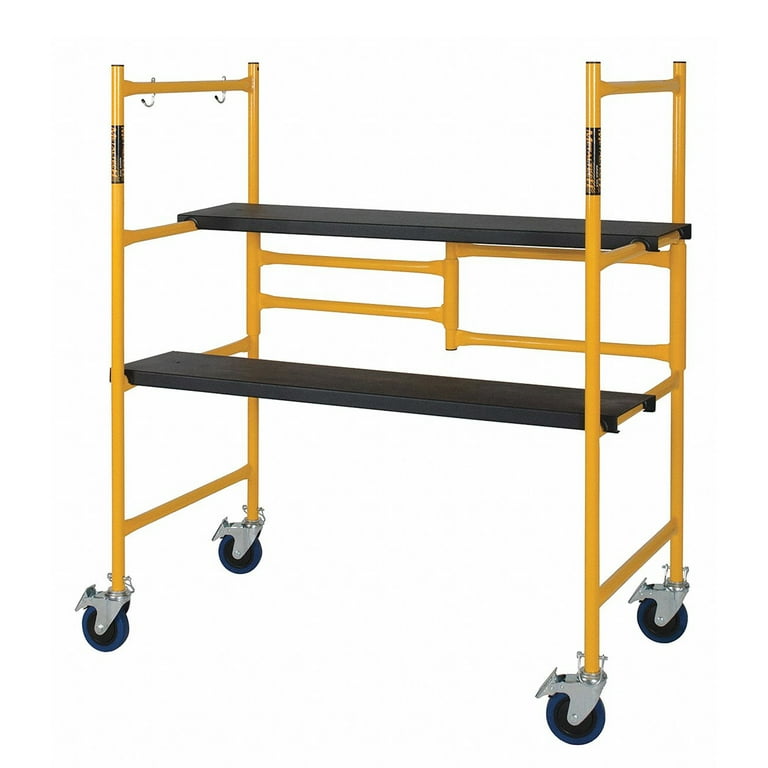High-Quality Residential Scaffolding for Seamless Home Renovations in Surrey
High-Quality Residential Scaffolding for Seamless Home Renovations in Surrey
Blog Article
Exploring the Numerous Kinds Of Scaffolding Used in Building Projects
The construction industry depends heavily on numerous types of scaffolding to fulfill certain task requirements, each offering distinct advantages and applications. Conventional framework scaffolding offers a tough structure for basic jobs, while suspended scaffolding is essential for work with high-rise frameworks. Various other choices, such as system and rolling scaffolding, deal with performance and wheelchair, respectively. In addition, the cantilever variant confirms indispensable in city atmospheres where room is constrained. Comprehending the subtleties of these scaffolding types is essential for enhancing safety and security and efficiency on construction websites, prompting a better examination of their distinct features and applications.

Traditional Frame Scaffolding
Traditional structure scaffolding is among the most extensively used methods in the building and construction market due to its effectiveness and adaptability. This system consists of horizontal and vertical frames that are set up to create a secure platform for employees and materials. The major components consist of vertical posts, straight ledgers, and angled braces, which with each other provide a solid framework that can support substantial loads.
One of the key advantages of standard framework scaffolding is its versatility to various building and construction jobs, ranging from residential structures to large commercial structures. The modular layout permits simple setting up and disassembly, making it reliable for both long-term and short-term projects. Additionally, the system can be customized in height and width, accommodating different structure styles and website conditions.
Security is vital in scaffolding applications, and typical structure systems are equipped with guardrails and toe boards to prevent falls and ensure employee defense. Furthermore, regular examinations and adherence to safety and security policies are critical in keeping the integrity of the scaffold. Generally, standard framework scaffolding remains a fundamental selection in the building and construction sector, offering a trustworthy platform for labor and enhancing total task effectiveness

Suspended Scaffolding
Put on hold scaffolding uses a special option for building projects that need access to elevated surface areas, particularly in circumstances where traditional framework scaffolding might be impractical. This sort of scaffolding is usually put on hold from the roof or top degrees of a structure, using a system of systems, pulleys, and ropes to develop a working space that can be adapted to different heights.
Among the primary benefits of put on hold scaffolding is its adaptability. It can be quickly rearranged or reduced to suit modifications in building and construction needs, making it suitable for jobs such as home window installation, façade work, and upkeep on skyscrapers. In addition, the marginal impact of suspended scaffolding allows for better use of ground area in metropolitan settings, where space is commonly restricted.
Safety is a critical factor to consider in making use of put on hold scaffolding. Appropriate rigging and anchoring systems should be utilized to guarantee stability and prevent accidents. Operators has to additionally be educated in the risk-free use of this equipment. Overall, put on hold scaffolding gives a effective and efficient solution for accessing hard-to-reach locations in numerous building and construction situations, improving both productivity and safety on website.
System Scaffolding
System scaffolding, frequently considered a modern solution in the scaffolding sector, contains pre-engineered components that can be quickly set up and adapted for various building and construction tasks. Scaffolding. This sort of scaffolding is identified by its modular style, which permits for flexibility and efficiency on task sites, suiting various heights and structural demands
Typically made from high-strength steel or aluminum, system scaffolding supplies enhanced longevity and stability. The elements consist of vertical articles, straight ledgers, and angled dental braces, which interconnect safely, making certain a robust structure. The layout typically includes standardized fittings, simplifying assembly and disassembly procedures, thereby lowering labor time and costs.

Rolling Scaffolding
Rolling scaffolding is a flexible option to typical set scaffolding, designed for wheelchair and ease of usage on construction websites. This type of scaffolding consists of a platform supported by structures with wheels, permitting workers to conveniently transfer it as needed. The flexibility attribute substantially enhances performance, as it lessens downtime associated with constructing and taking apart fixed scaffolding.
Typically built from lightweight materials such as light weight aluminum or steel, rolling scaffolding provides a tough yet portable remedy for jobs requiring regular repositioning - Scaffolding. It is particularly helpful in tasks such as painting, drywall installment, and electric job, where access to different heights and areas is needed
Safety is extremely important in rolling scaffolding layout, with functions such as locking wheels to avoid unintentional activity when being used, and guardrails to safeguard employees from falls. Additionally, several designs are flexible in height, fitting different project requirements.
Cantilever Scaffolding

The style of cantilever scaffolding usually involves making use of brackets or arms secured to a building or framework, allowing the platform to expand outside safely. Safety and security is vital; thus, these scaffolds have to be engineered to withstand numerous tons and ecological conditions. Regular examination and upkeep are necessary to ensure architectural honesty and scaffolder apprenticeship employee security.
Cantilever scaffolding is favored for its flexibility and effective use of space, making it a prominent option in metropolitan environments where area restrictions prevail. Moreover, it assists in easier accessibility to high altitudes, inevitably contributing to the overall effectiveness of building tasks. Just like all scaffolding kinds, correct training and adherence to safety standards are important for employees utilizing cantilever scaffolding.
Final Thought
In verdict, the diverse sorts of scaffolding utilized in building jobs each serve unique objectives customized to specific site requirements. Conventional framework scaffolding gives security, while suspended scaffolding offers flexibility for elevated jobs. System scaffolding facilitates quick assembly, and rolling scaffolding enhances wheelchair for differing workplace. Cantilever scaffolding effectively attends to obstacles in city setups. Comprehending these scaffolding kinds is important for enhancing security and productivity in building, inevitably adding to the successful completion of projects.
Standard structure scaffolding offers a tough foundation for basic tasks, while suspended scaffolding is essential for job on high-rise frameworks.Moving scaffolding is a versatile choice to standard fixed scaffolding, made for wheelchair and ease of usage on building and construction sites. As with all scaffolding kinds, correct training and adherence to security standards are critical for employees using cantilever scaffolding.
Standard framework scaffolding supplies stability, while put on hold scaffolding supplies flexibility for elevated jobs. System scaffolding helps with fast assembly, and rolling scaffolding enhances wheelchair for varying job environments.
Report this page